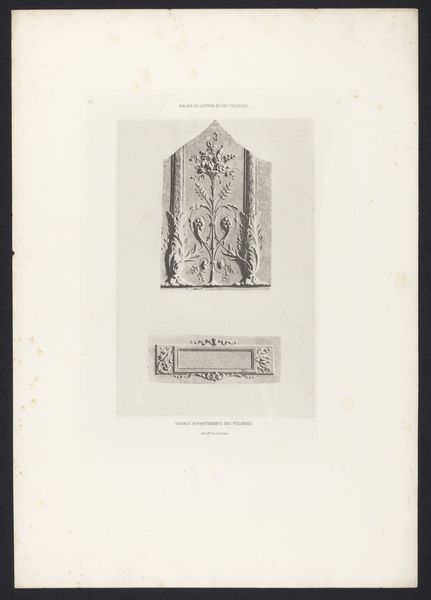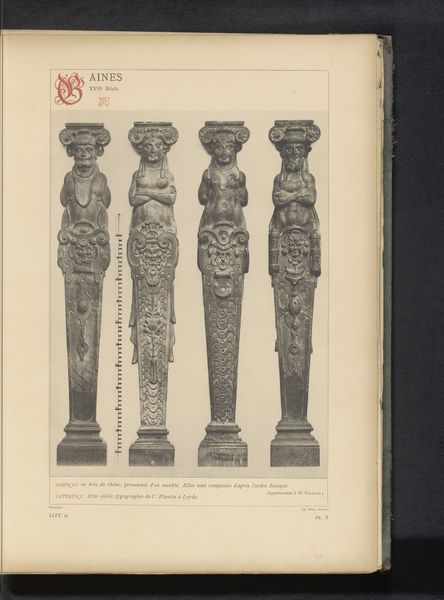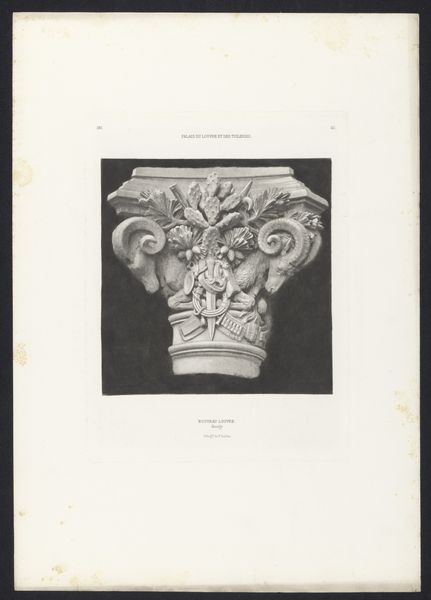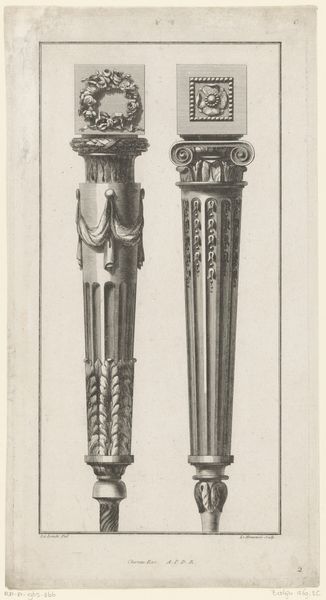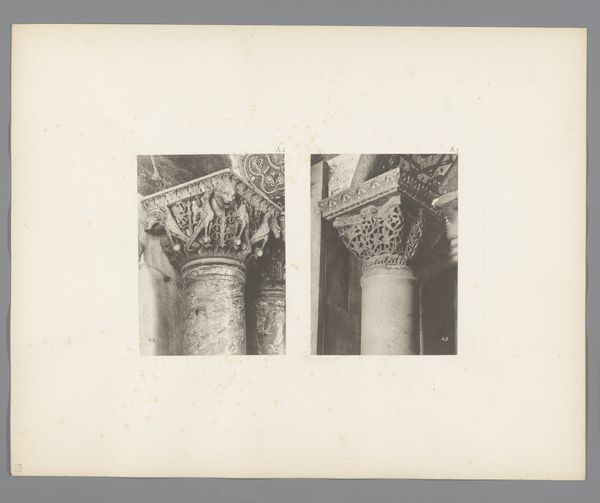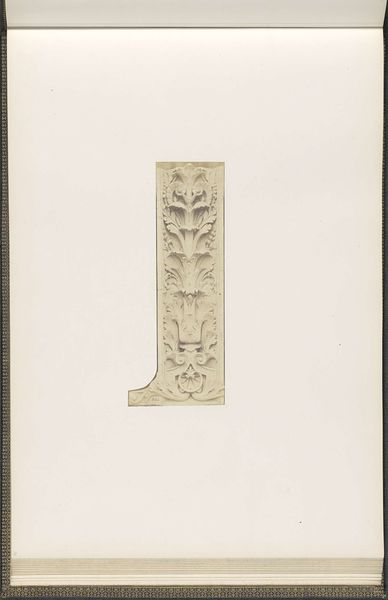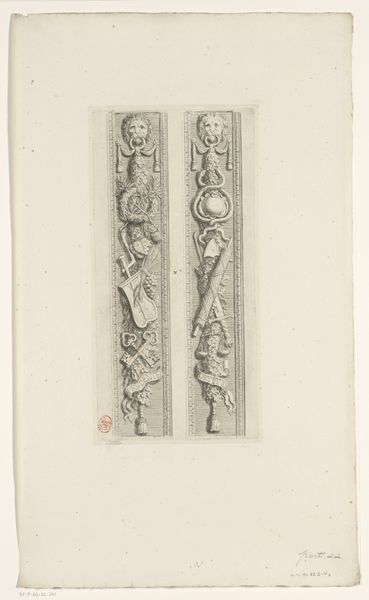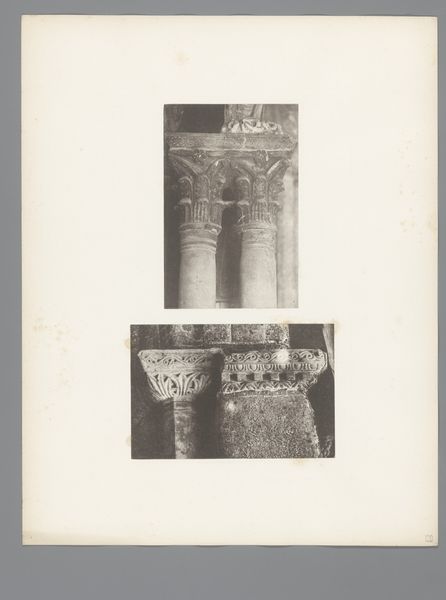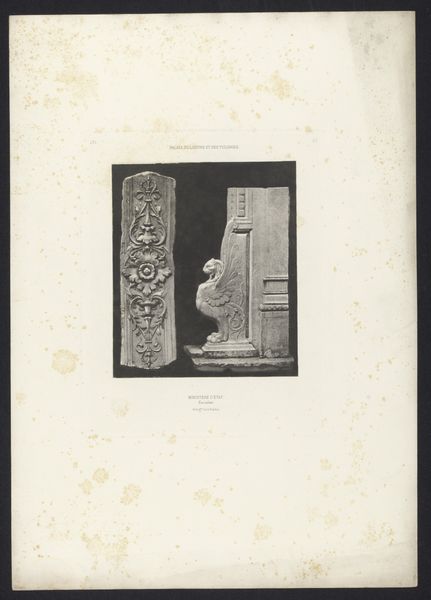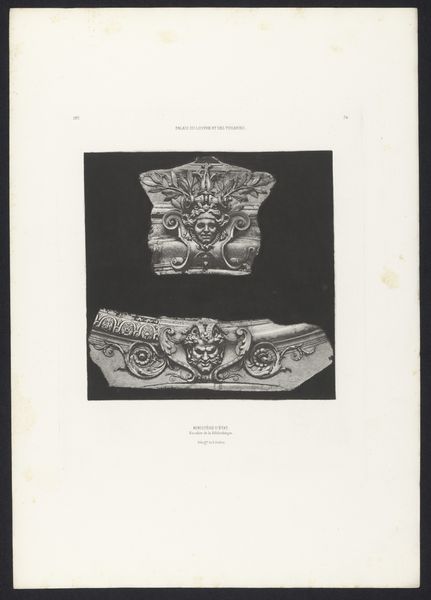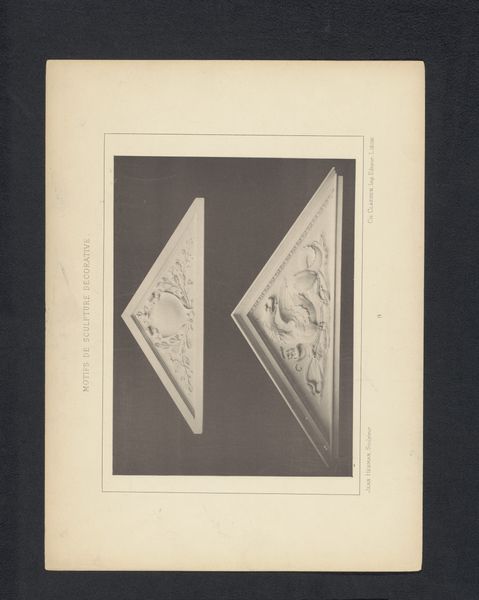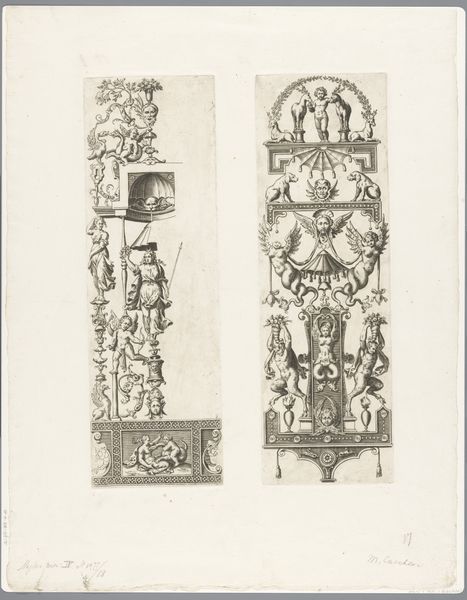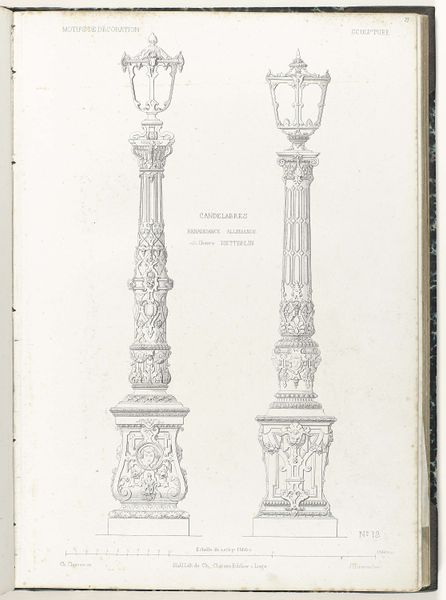
Fotoreproductie van een tekening, voorstellende twee pilasters met dierornamenten voor de Salle du Manège in het Palais du Louvre te Parijs before 1870
0:00
0:00
Dimensions: height 260 mm, width 189 mm
Copyright: Rijks Museum: Open Domain
Edouard Baldus created this photographic reproduction of pilasters for the Salle du Manège in the Louvre Palace in Paris. The Salle du Manège, originally a riding school, was transformed into a space of political significance during the French Revolution, serving as the meeting place for the National Assembly. The pilasters, adorned with animal ornaments, reflect the symbolic language of power and authority prevalent in French art and architecture. Baldus’s photograph captures not only the physical details of these architectural elements, but also the cultural and political context in which they were created. The choice of animal motifs, the classical design of the pilasters, and their location within the Louvre Palace, all speak to the complex interplay between art, power, and social identity in 19th-century France. To truly understand this work, we can consult historical archives, architectural plans, and political documents. Doing so allows us to recognize that the meaning of art lies in its connection to the world around it.
Comments
No comments
Be the first to comment and join the conversation on the ultimate creative platform.
